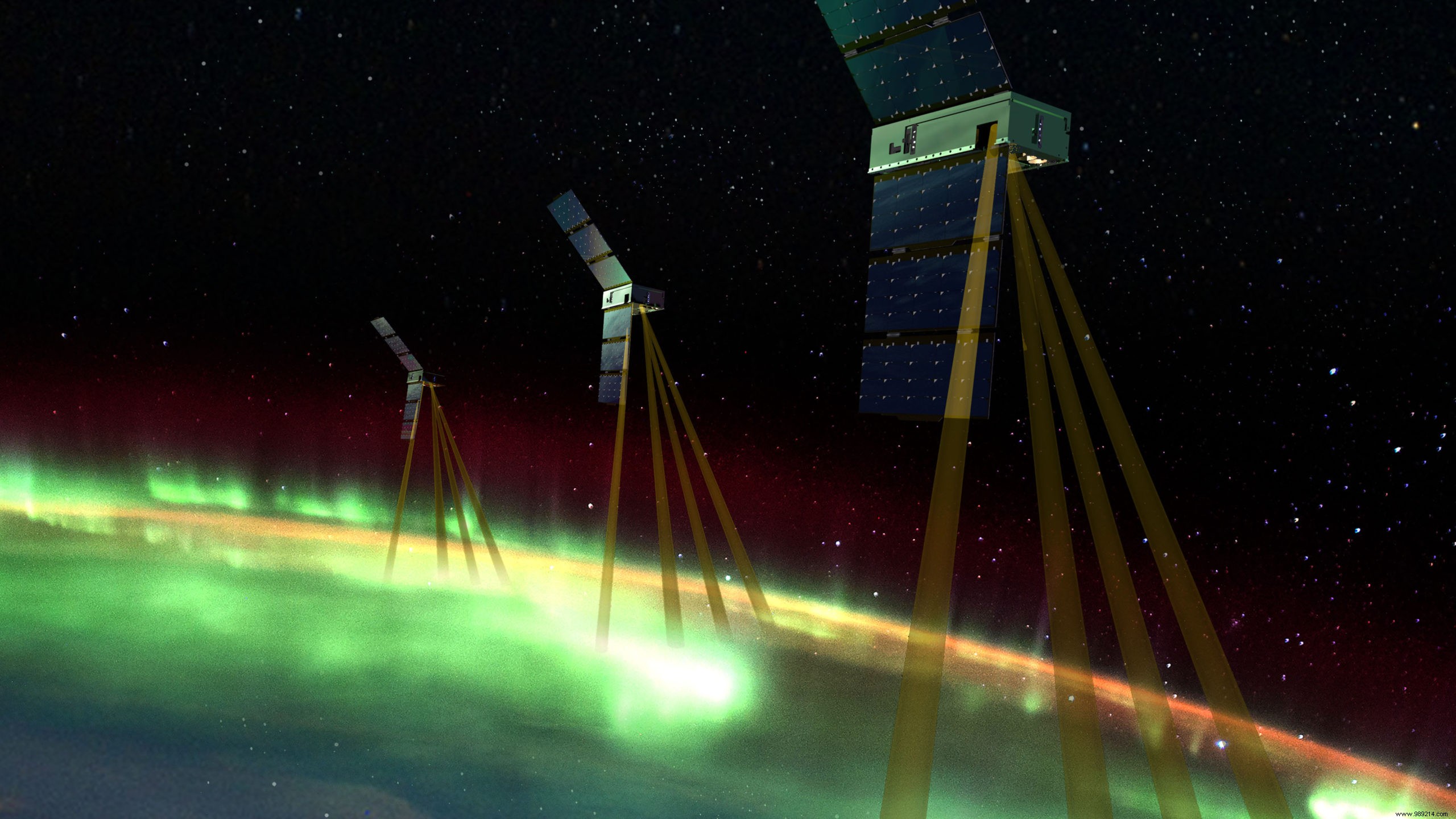Two new exploration missions recently unveiled will aim to improve our understanding of the complex interactions between the Earth and the Sun. The goal:to better predict "space weather" that could threaten our planet.
Understanding the physics that power wind and solar outbursts, including flares and coronal mass ejections, could one day help researchers predict these events that could threaten the human technology and the physical integrity of astronauts. With this in mind, two new heliophysics missions have recently been approved by NASA.
The first mission, dubbed EZIE (for Electrojet Zeeman Imaging Explorer ), will involve the deployment of three cubesats in Earth orbit . The latter will be responsible for studying the electrical currents in the Earth's atmosphere associated with auroral activity and the magnetosphere of our planet. Satellites will focus in particular on Auroral Electrojet , an electric current that reaches the magnetosphere and passes through the atmosphere at altitudes between 97 and 145 km, to determine how it evolves over time.
“Despite decades of research, we still do not understand the basic configuration of electrical currents that are at the heart of the interactions between Earth and surrounding space “, says Jeng-Hwa Yee of Johns Hopkins University. "This is a problem of universal importance since it applies to any magnetized body such as Mercury, Saturn and Jupiter, but it is also of practical importance since these currents have a profound impact on our technologies in the world. space and here on Earth “.
EZIE is scheduled for launch in June 2024.

The second mission, dubbed EUVST (for Extreme Ultraviolet High-Throughput Spectroscopic Telescope Epsilon Mission ), this time will involve sending a satellite to analyze the spectrum of the extreme ultraviolet radiation of our star . Instruments on board will notably examine how the solar wind emerges from the Sun's atmosphere (the solar corona) and propagates through space. Researchers will then use this data to determine how these processes affect the Earth's atmosphere.
According to NASA, this "next-generation solar observation satellite will have the highest resolution and sensitivity of any previous UV spectrometer.
The Japanese Space Agency (JAXA) will lead this mission. The US agency will contribute $55 million to the project, developing a UV detector, parts for the spectrograph, a guide telescope, software and an imaging system to contextualize the spectrographic measurements. Its launch is scheduled for 2026.